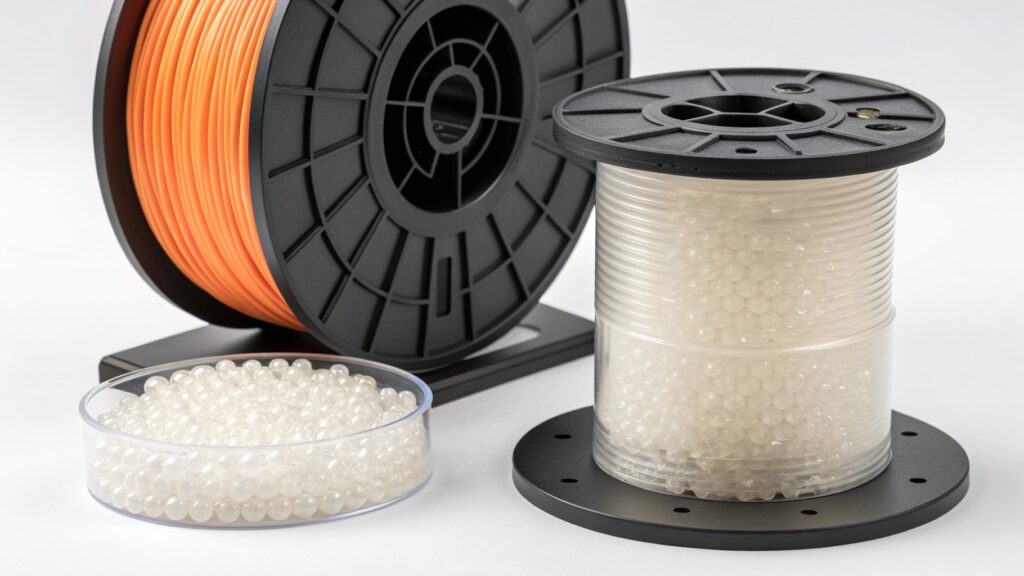The decastent holder h2d is a specialized moisture-control accessory designed for the Bambu Lab H2D AMS, ensuring your 3D printing filament stays perfectly dry and ready for use. When you finish a spool and leave it in the AMS drawer, moisture from the surrounding air can slowly seep in, turning once-flexible filament into a brittle, flaky mess that ruins prints. This is where a decastent holder becomes essential, keeping humidity levels low and preventing the destructive effects of absorbed water on your filament. By maintaining a controlled environment inside the AMS, you preserve print quality, avoid clogs, and protect your investment in premium materials.
How the decastent holder h2d Works
The decastent holder h2d works by securely housing desiccant material, such as silica gel or molecular sieves, inside the AMS drawer where your filament is stored. This holder keeps the desiccant in the optimal position to absorb airborne moisture, preventing it from reaching the filament. Unlike loose packets, which can shift or spill, the holder keeps everything contained, maximizes airflow exposure, and allows for easy replacement or regeneration of the desiccant. The result is consistent dryness that improves print reliability and extends the lifespan of your materials.
Why Moisture Control is Critical in 3D Printing
Moisture in filament causes a range of printing issues, from stringing and surface imperfections to weakened layer adhesion and reduced tensile strength. PLA, PETG, ABS, Nylon, and TPU are all susceptible to absorbing water, with some like Nylon being especially sensitive. Even small amounts of moisture can cause popping sounds during extrusion, visible bubbles, and poor layer bonding. By using a decastent holder h2d, you eliminate these problems, ensuring smooth extrusion, stronger prints, and better overall dimensional accuracy. For long-term storage, especially in humid climates, moisture control is not optional—it’s essential.
Types of decastent holder h2d Designs
The market offers both OEM decastent holders provided by manufacturers and 3D-printed versions created by the community. OEM holders are designed to perfectly match the AMS drawer dimensions, while 3D-printed ones often add customization features such as larger desiccant capacity or transparent windows for monitoring. Some holders are refillable, allowing you to swap out old desiccant for new, while others are single-use for maximum convenience. Compact designs fit easily in tight AMS spaces, while full-capacity holders prioritize moisture absorption power over size.
How to Install a decastent holder h2d in Bambu Lab H2D AMS
Installing a decastent holder h2d is straightforward. First, open the AMS drawer and locate an open space where airflow can circulate around the desiccant. Position the holder so it sits securely without blocking filament movement. Slide it into place, ensuring that the desiccant is fresh and active before sealing the drawer. Avoid overfilling the AMS with multiple large holders, as this can interfere with spool rotation. Once installed, monitor your filament’s performance to ensure moisture levels remain low.
Best Desiccant Materials for H2D Holders
The most common desiccant for the decastent holder h2d is silica gel, valued for its affordability and efficiency. Molecular sieves, while more expensive, provide superior moisture absorption in high-humidity environments and can even capture water at lower relative humidity levels. Color-indicating silica gel is especially useful, as it changes color when saturated, signaling it’s time for regeneration or replacement. Reusable options are more cost-effective in the long run, while disposable packets offer convenience with no maintenance required.
Maintenance and Regeneration
To keep your decastent holder h2d effective, check it every few weeks, or more often in humid weather. When the desiccant is saturated, indicated by color change or reduced performance, regenerate it by heating in an oven at the manufacturer-recommended temperature, usually between 120°C and 150°C for silica gel. After cooling, refill the holder and reinstall it. Skipping maintenance risks moisture buildup, which can undo all your efforts to keep filament dry.
3D Printing Your Own decastent holder h2d
Many makers prefer to 3D print their own decastent holders using freely available STL files from online repositories. PLA, PETG, and ABS are all viable materials, but PETG is often preferred for its heat resistance and durability. Custom designs may include sliding covers for easy refills, larger chambers for more desiccant, or snap-fit parts for quick assembly. Printing your own holder allows for personalization while keeping costs low.
Troubleshooting Moisture Issues Even with a Holder
If you still encounter moisture-related print defects despite using a decastent holder h2d, inspect the AMS for sealing issues that might allow humid air to enter. In extremely humid regions, a single holder may not be enough—combine it with an active filament dryer or multiple holders for extra protection. Also, ensure that the desiccant itself is functional, as expired or oversaturated material will fail to absorb moisture.
Cost, Availability, and Where to Buy
Decastent holder h2d units range in price from just a few dollars for 3D-printed models to $15–$30 for OEM versions. They are available from online marketplaces like Amazon, eBay, and 3D printing specialty stores, as well as community marketplaces where hobbyists sell custom-printed designs. Your choice depends on budget, convenience, and design preference.
Conclusion
The decastent holder h2d is a small but crucial accessory for anyone serious about 3D printing with the Bambu Lab H2D AMS. By controlling moisture effectively, it protects your filament, improves print reliability, and saves you from wasted materials and failed prints. Whether you choose an OEM product or a DIY 3D-printed version, this simple upgrade can dramatically enhance your printing experience
FAQS
How long does desiccant last in an H2D holder?
Depending on humidity levels, desiccant can last anywhere from a few weeks to several months before needing regeneration or replacement.
Can I use rice instead of silica gel?
While rice can absorb some moisture, it’s far less effective and not recommended for serious filament storage.
Will a decastent holder work with all filaments?
Yes, it’s effective for PLA, PETG, ABS, TPU, Nylon, and more—any material prone to moisture absorption benefits from it.
How do I know my desiccant needs replacing?
Color-changing desiccants make it easy, while non-indicating ones require periodic checking or weighing for moisture content.
Is 3D printing my own holder better than buying one?
If you value customization and cost savings, printing your own can be ideal; for a perfect fit and hassle-free setup, an OEM version may be best.

